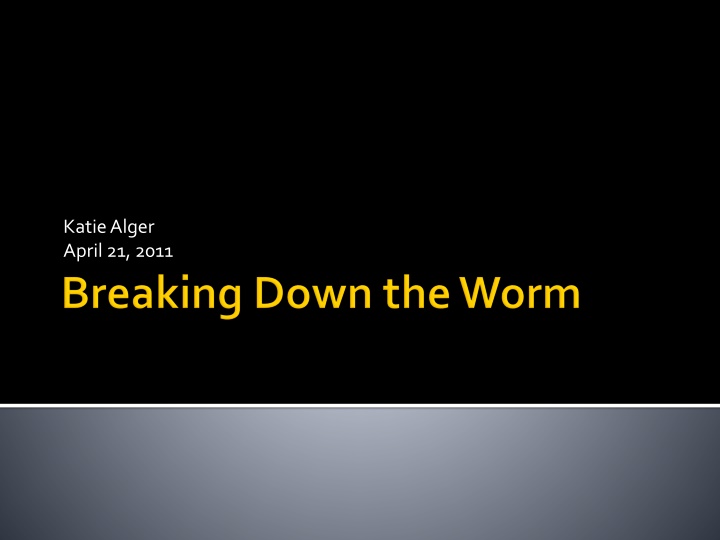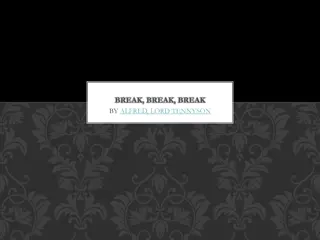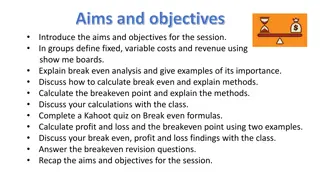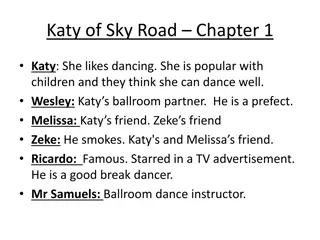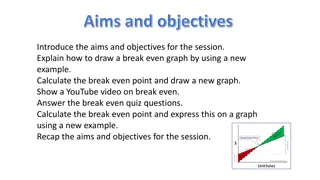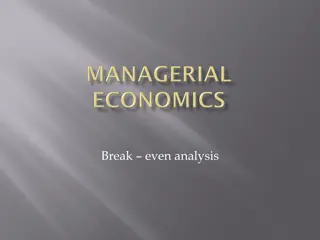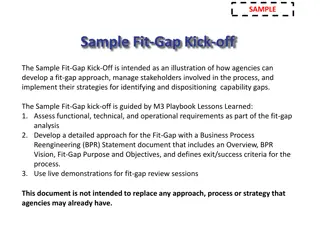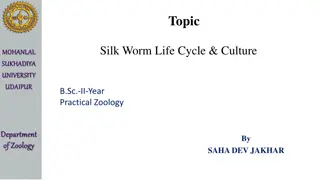Learn the Break-Dancing Move - Kick-Worm or Caterpillar!
Explore the iconic break-dancing move known as the kick-worm or caterpillar, its history, and popularity. Discover how to perform this dance skill at events like parties, weddings, and more. The step-by-step instructions and muscle engagement guide will help you master this dynamic movement.
Download Presentation

Please find below an Image/Link to download the presentation.
The content on the website is provided AS IS for your information and personal use only. It may not be sold, licensed, or shared on other websites without obtaining consent from the author.If you encounter any issues during the download, it is possible that the publisher has removed the file from their server.
You are allowed to download the files provided on this website for personal or commercial use, subject to the condition that they are used lawfully. All files are the property of their respective owners.
The content on the website is provided AS IS for your information and personal use only. It may not be sold, licensed, or shared on other websites without obtaining consent from the author.
E N D
Presentation Transcript
Katie Alger April 21, 2011
An iconic break-dancing move also known as the kick-worm or the caterpillar First invented in the 1920s Seen during the 1970s punk emergence Popularized in the infancy of 80 s hip-hop dance funk
Listed as a life skill on eHow.com Recommended for: Parties Bat mitzvahs Sweet 16s Weddings Spring fling
Lie flat on the ground with your palms near your head and your elbows at your sides. Prop your toes up on the floor with your feet close together. Using your toes, pick up your feet, legs and hips in a fluid motion. Follow through with lifting your body as your feet and legs go back down to the floor. Lift up the top half of your body with your hands, palms down. Lift up your head as your body arcs to the top of your torso. Fall back down into the flat on the floor position. Repeat these steps over and over as you move across the room or dance floor. 1. 2. 3. 4. 5. 6. 7. 8.
Arms bear a lot of weight, while lower back and abdominal muscles are used to whip the body through the undulating motion. Recruit fast twitch muscle fibers Generate short bursts of strength (more power) and speed (higher Vmax).
To the naked eye (without the aid of a high speed camera), the motion of the forwards and backwards worm look almost the same When performing the worm, the two types feel much different (forward hurts!) Question: Which parts of the body move differently during the two versions?
Center of mass Hands Feet Knees (below)
Center of mass Knees Feet Hands (below)
Which part of the body generates the most momentum? Are there large differences in momentum between the two versions of the worm?
Weight distribution 50% of body mass supported by center of mass 45% supported by knees 5% by feet Velocities used are correct from LoggerPro
Feet X velocity = .4559 m/s Y velocity = 2.642 m/s X + Y vectors added = 2.68 m/s p=mv=(.05*52.3)(2.68) = 7.01 kg m/s Knees X velocity = .7847 m/s Y velocity = 1.612 m/s X + Y vectors added = 1.78 m/s p=mv=(.45*52.3)(1.78) = 41.89 kg m/s Center of mass X velocity = .4410 m/s Y velocity = 1.015 m/s X + Y vectors added = 1.092 m/s p=mv=(.50*52.3)(1.092) = 28.55 kg m/s
Feet X velocity = 1.045 m/s Y velocity = 4.680 m/s X + Y vectors added = 4.78 m/s p=mv=(.05*52.3)(4.78) = 12.49 kg m/s Knees X velocity = .9938 m/s Y velocity = 2.501 m/s X + Y vectors added = 2.688 m/s p=mv=(.45*52.3)(2.688) = 63.26 kg m/s Center of mass X velocity = .8081 m/s Y velocity = 1.801 m/s X + Y vectors added = 1.97 m/s p=mv=(.50*52.3)(1.97) = 51.51 kg m/s
Forward Momentum Backward Momentum Center of Mass 28.55 kg m/s 51.51 kg m/s Knees 41.89 kg m/s 63.26 kg m/s Feet 7.01 kg m/s 12.49 kg m/s Movement of the knees generated the most momentum in both cases. Backwards movement creates more momentum than forwards. Why?
Center of mass, knees, and feet lift higher when going backwards Greater change in Y value faster velocity more momentum
Forward motion takes longer per undulation (1.4 s/cycle versus 1 s/cycle) Longer cycle time shorter change in X over same time period slower velocity less momentum
Does backwards motion really create more momentum? Increase sample size Is the impact on trunk, knees, and feet much different between the two types? Use force plates. Which version of the worm would be a better exercise? Break down energy to see calories burned.
